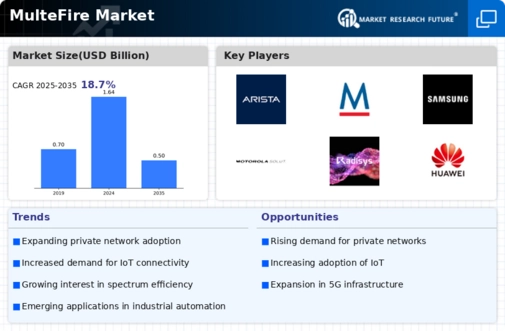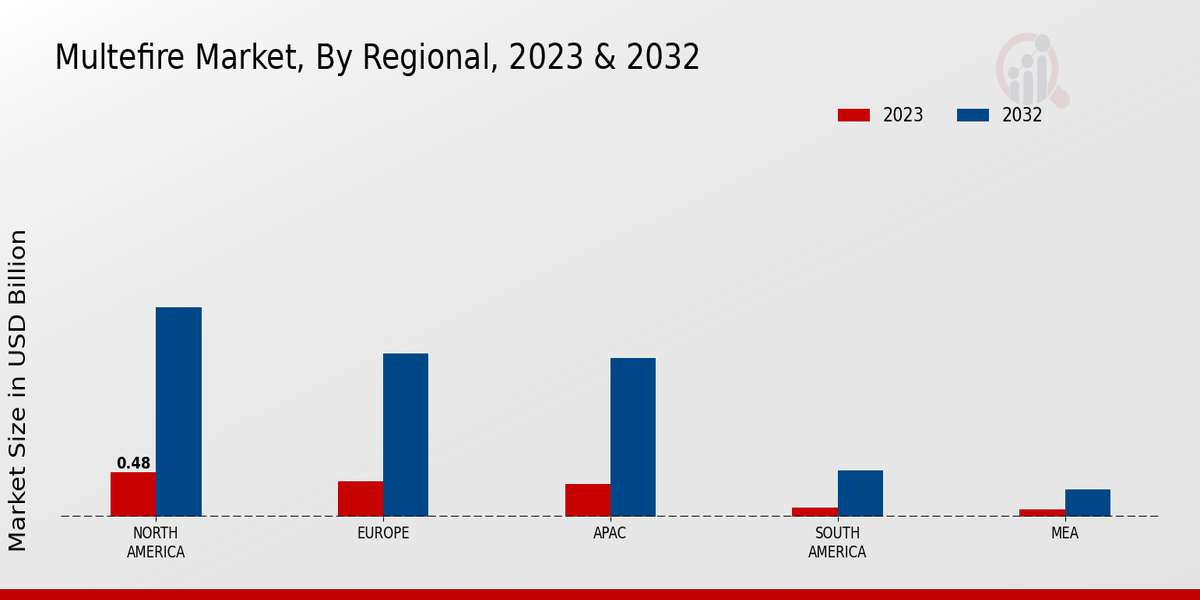Growing Adoption of MulteFire Technology
The MulteFire Market is witnessing a notable increase in the adoption of MulteFire technology, particularly among enterprises seeking to establish private wireless networks. This technology allows for the deployment of LTE and 5G networks without the need for licensed spectrum, which is appealing to organizations aiming to enhance connectivity while minimizing costs. As of 2025, the number of enterprises implementing MulteFire solutions is projected to rise significantly, driven by the need for reliable and high-speed connectivity in various sectors, including manufacturing, logistics, and healthcare. The ability to operate in unlicensed spectrum bands enables businesses to deploy networks more rapidly and efficiently, thus fostering innovation and operational efficiency. This trend indicates a robust growth trajectory for the MulteFire Market, as more companies recognize the benefits of private networks.
Enhanced Connectivity for IoT Applications
The integration of MulteFire technology with Internet of Things (IoT) applications is emerging as a key driver in the MulteFire Market. As industries increasingly adopt IoT solutions, the demand for reliable and high-capacity wireless connectivity becomes paramount. MulteFire offers a compelling solution by providing enhanced connectivity in environments where traditional Wi-Fi may struggle. For instance, sectors such as smart cities, agriculture, and industrial automation are leveraging MulteFire to support a multitude of connected devices. The MulteFire Market is expected to see a surge in demand as IoT deployments continue to expand, with estimates suggesting that the number of connected devices could reach billions by 2025. This growth underscores the importance of MulteFire technology in facilitating seamless communication and data exchange among IoT devices.
Rising Demand for Enhanced Security Solutions
The increasing focus on security in wireless communications is emerging as a significant driver for the MulteFire Market. As cyber threats become more sophisticated, organizations are prioritizing secure connectivity solutions to protect sensitive data and maintain operational integrity. MulteFire technology offers robust security features that are essential for enterprises, particularly in sectors such as finance, healthcare, and critical infrastructure. The ability to create private networks with enhanced security protocols positions MulteFire as a preferred choice for organizations seeking to mitigate risks associated with data breaches and cyberattacks. As awareness of security challenges grows, the demand for MulteFire solutions is expected to rise, further propelling the MulteFire Market forward.
Regulatory Support for Unlicensed Spectrum Use
The MulteFire Market is benefiting from favorable regulatory environments that support the use of unlicensed spectrum for wireless communications. Governments and regulatory bodies are increasingly recognizing the potential of unlicensed spectrum to drive innovation and economic growth. This regulatory support is crucial for the proliferation of MulteFire technology, as it allows enterprises to deploy private networks without the complexities associated with licensed spectrum acquisition. As of 2025, several regions are expected to implement policies that further promote the use of unlicensed spectrum, thereby enhancing the attractiveness of MulteFire solutions. This regulatory landscape is likely to encourage more businesses to explore MulteFire technology, contributing to the overall growth of the MulteFire Market.
Support for Digital Transformation Initiatives
The ongoing digital transformation initiatives across various industries are significantly influencing the MulteFire Market. Organizations are increasingly recognizing the need for advanced connectivity solutions to support their digital strategies, which often involve the integration of cloud services, data analytics, and real-time communication. MulteFire technology provides a flexible and scalable solution that aligns with these digital transformation goals. By enabling enterprises to deploy private networks, MulteFire facilitates improved data management and operational efficiency. As businesses invest in digital tools and platforms, the demand for MulteFire solutions is likely to grow, with projections indicating a substantial increase in market size by 2025. This trend highlights the critical role of MulteFire technology in enabling organizations to navigate their digital journeys effectively.

















Leave a Comment